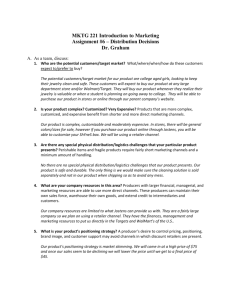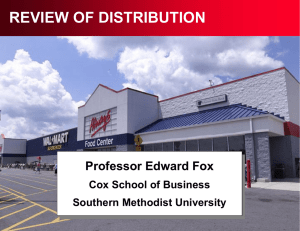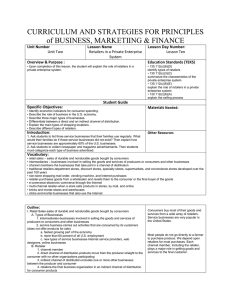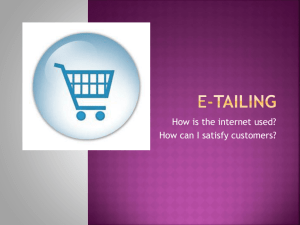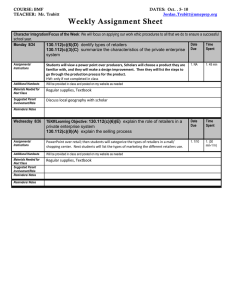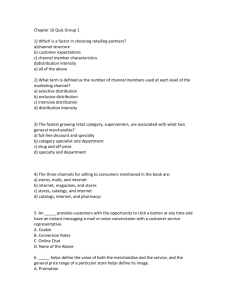Chapter 16 Quiz 1. The Gap, Lenscrafters, and Foot Locker are all
advertisement
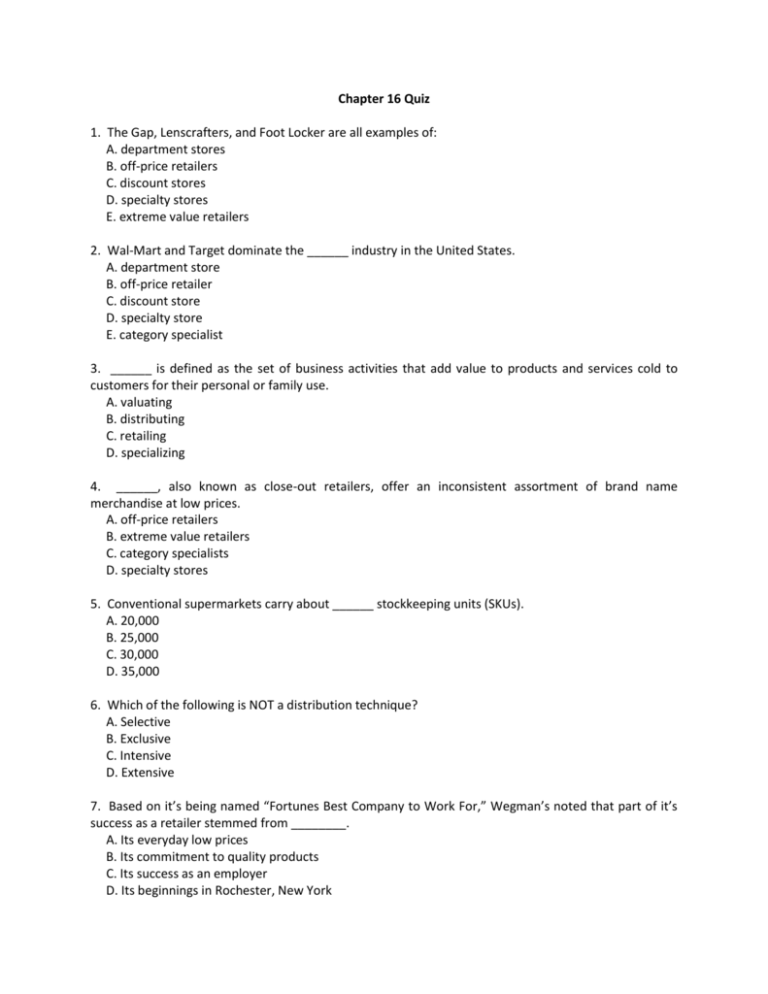
Chapter 16 Quiz 1. The Gap, Lenscrafters, and Foot Locker are all examples of: A. department stores B. off-price retailers C. discount stores D. specialty stores E. extreme value retailers 2. Wal-Mart and Target dominate the ______ industry in the United States. A. department store B. off-price retailer C. discount store D. specialty store E. category specialist 3. ______ is defined as the set of business activities that add value to products and services cold to customers for their personal or family use. A. valuating B. distributing C. retailing D. specializing 4. ______, also known as close-out retailers, offer an inconsistent assortment of brand name merchandise at low prices. A. off-price retailers B. extreme value retailers C. category specialists D. specialty stores 5. Conventional supermarkets carry about ______ stockkeeping units (SKUs). A. 20,000 B. 25,000 C. 30,000 D. 35,000 6. Which of the following is NOT a distribution technique? A. Selective B. Exclusive C. Intensive D. Extensive 7. Based on it’s being named “Fortunes Best Company to Work For,” Wegman’s noted that part of it’s success as a retailer stemmed from ________. A. Its everyday low prices B. Its commitment to quality products C. Its success as an employer D. Its beginnings in Rochester, New York 8. In the Internet Channel, what two categories make up personalization? A. global and virtual communities B. customer service and personalized offerings C. brands and gifts D. technology and services 9. Which of the following is NOT a type of food retailer? A. supercenter B. warehouse club C. supermarket D. Category specialist 10. All of the following are benefits provided by Catalogs except: A. Convenience B. Information C. Risk Reduction D. Safety 1. D 2. C 3. C 4. A 5. C 6. D 7. C 8. B 9. D 10. C
